It's remarkable how, in just eight months, a leopard cub can grow almost as big as its mother. In March of this year, this same leopard was seen perched in a tree with a carcass, keeping a watchful eye and waiting for her mother. At the time, we estimated her to be about three months old when leopard cubs start to explore with their mother and eat solid food. Now, the cub has grown so much that, to an untrained eye, she could be mistaken for an adult.
Over the next six to twelve months, as she approaches 18-24 months old, this young leopard will leave her mother to establish her own territory. By then, she will have developed the strength and hunting skills to survive independently. Around three, she will fully mature, ready to find a mate, and possibly begin raising her own cubs.
We were lucky to see so many leopards this week in the Mara. A female leopard was sighted around the Kaburini Area. We had previously seen her with two cubs in December 2023, but this time, she was alone. Her cubs would not yet be fully independent at their current age, so it's uncertain if they were separated temporarily or if she may have unfortunately lost one or both. Leopard cubs are especially vulnerable to predators like lions, hyenas and other leopards. Their survival depends on staying cautious, often hidden in trees while their mother hunts or when danger is nearby.
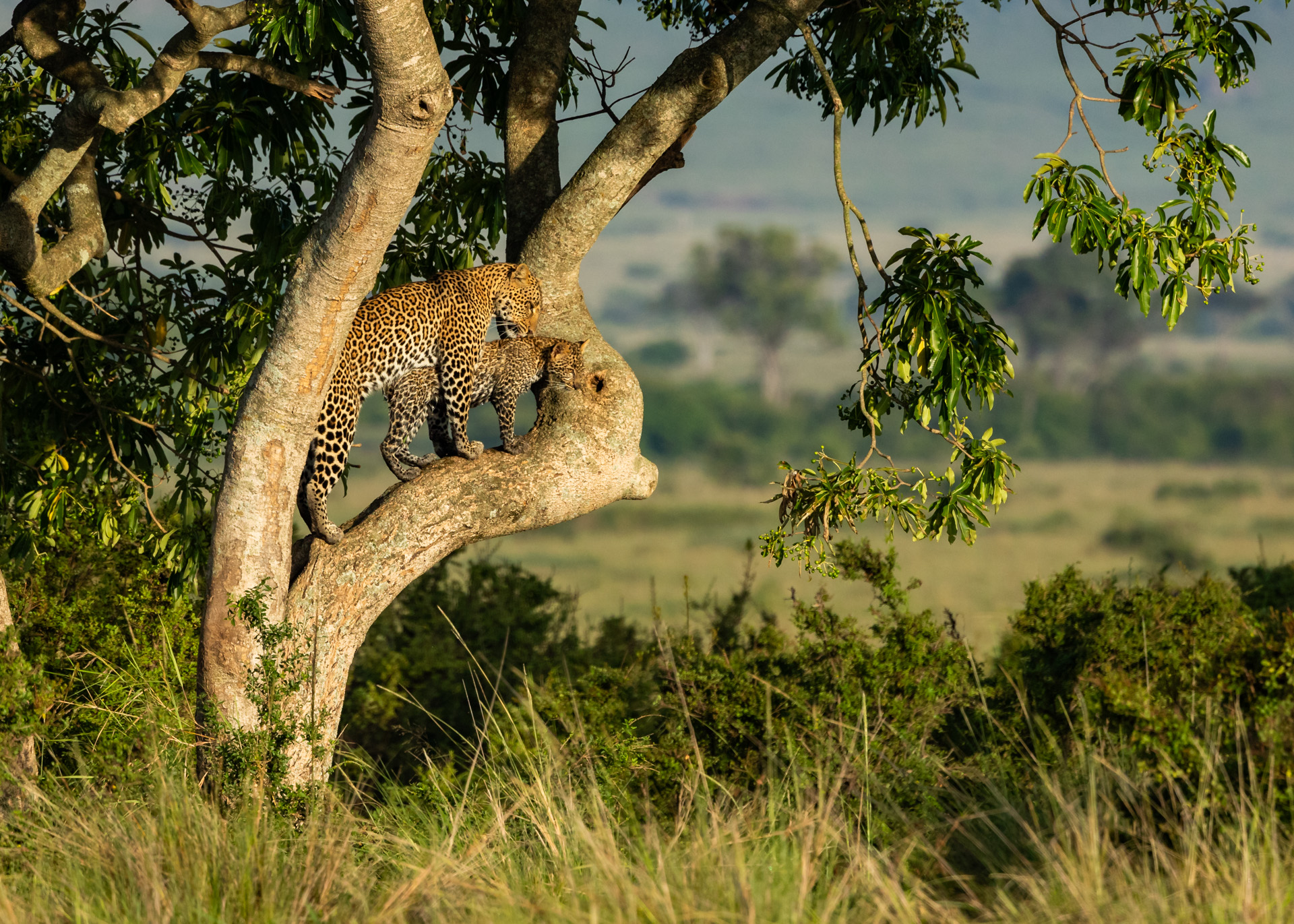
Hyena pups are born in underground dens, usually in litters of two or three, and are raised communally within a clan. Unlike other species that share parental responsibilities, mother hyenas primarily focus on their own pups. While they keep their young together with the clan, each mother nurses and protects her own offspring, ensuring their safety from other clan members.
At birth, spotted hyena pups are almost fully developed, with open eyes and small teeth, ready for a competitive life. They are unique among mammals because they engage in sibling rivalry almost immediately as they fight for dominance and access to their mother's milk, which is rich in nutrients. As they grow, they join the clan on hunting excursions and scavenging missions, learning social dynamics and essential survival skills.
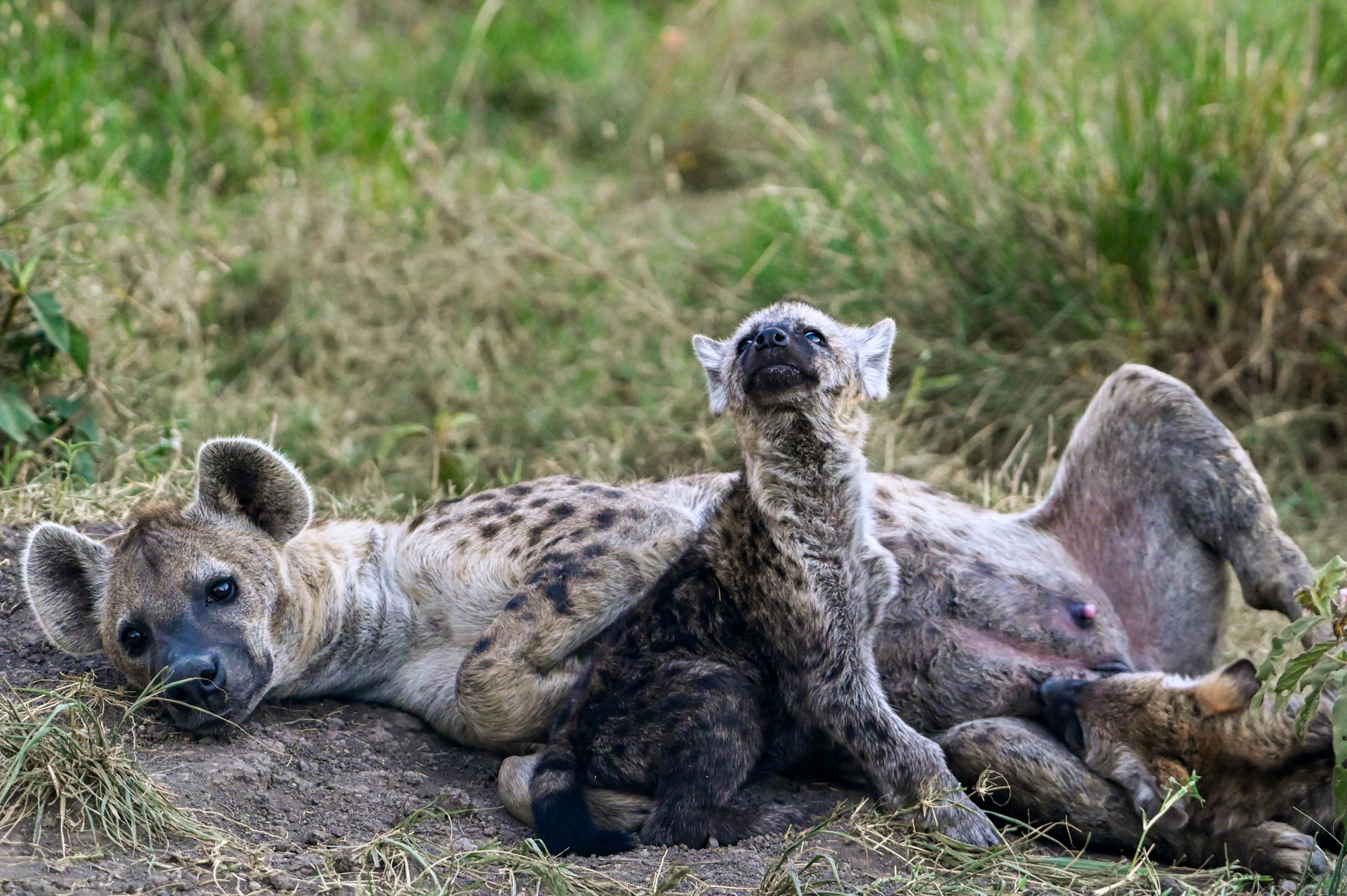
Most animals rely on favourable environmental conditions to maintain healthy pregnancies, so any significant deviation from these conditions can increase the likelihood of stillbirth or miscarriage. We encountered this mother impala desperately trying to protect her lifeless calf from scavenging lappet-faced vultures. A grieving impala mother would briefly stay near the calf out of instinct or confusion. Still, eventually, she would abandon the body rather than draw attention to herself from predators.
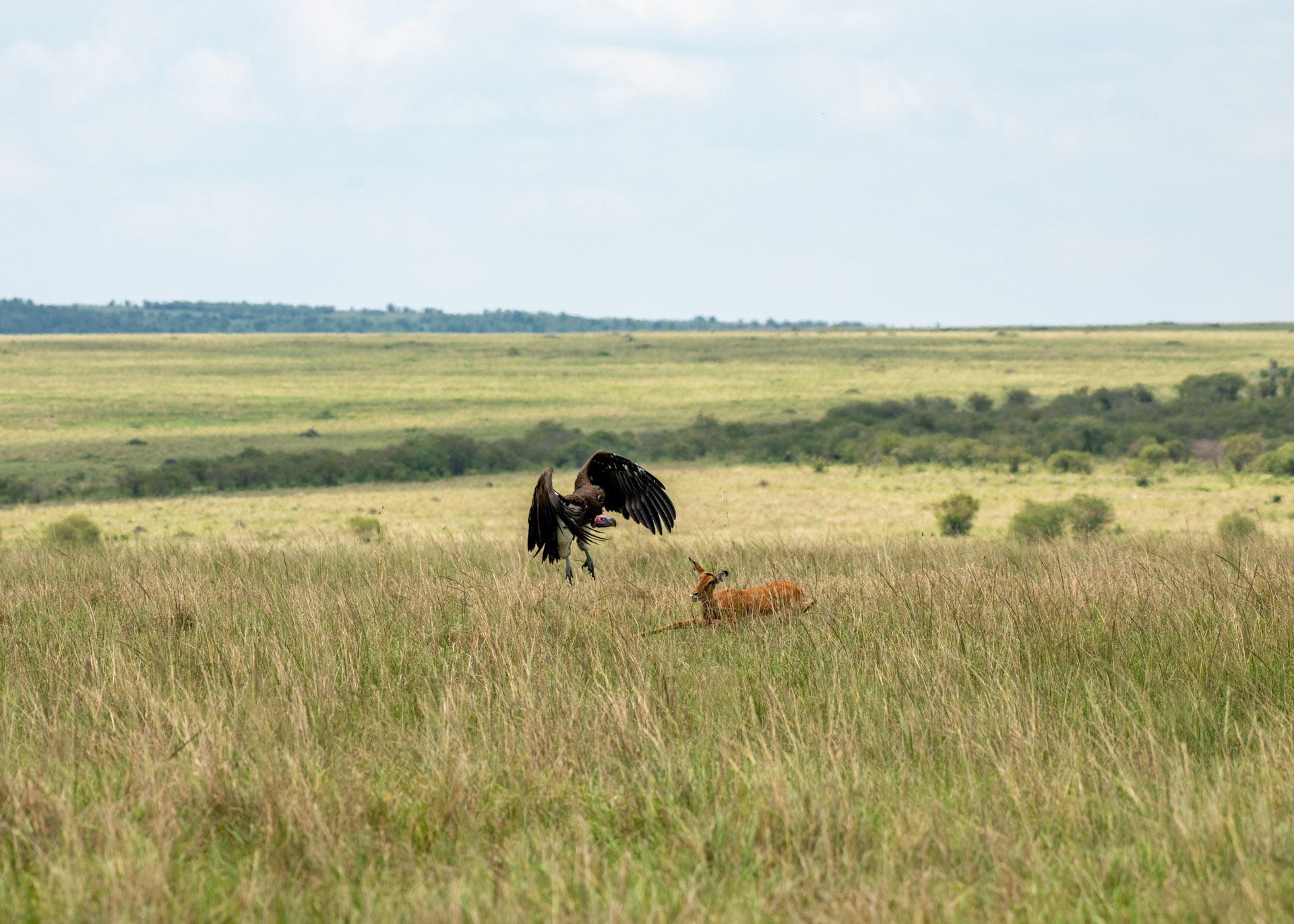
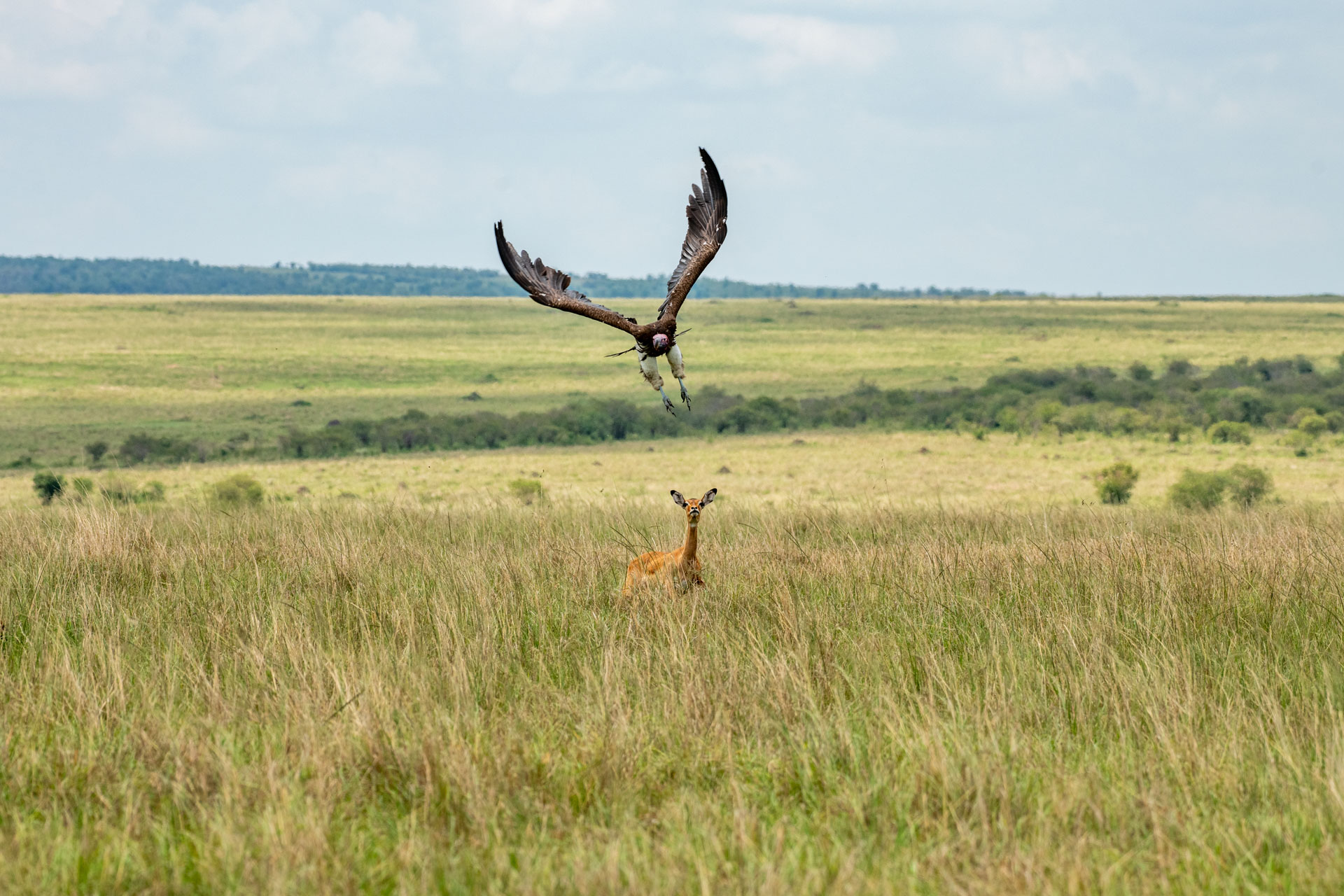
Hippopotamuses are born with small, rounded ears on top of their heads, which help them listen for danger and communication when partially submerged in water. However, in rare cases, as we witnessed this week, a hippo might have a congenital deformity that affects its ear structure. — Robert Sayialel
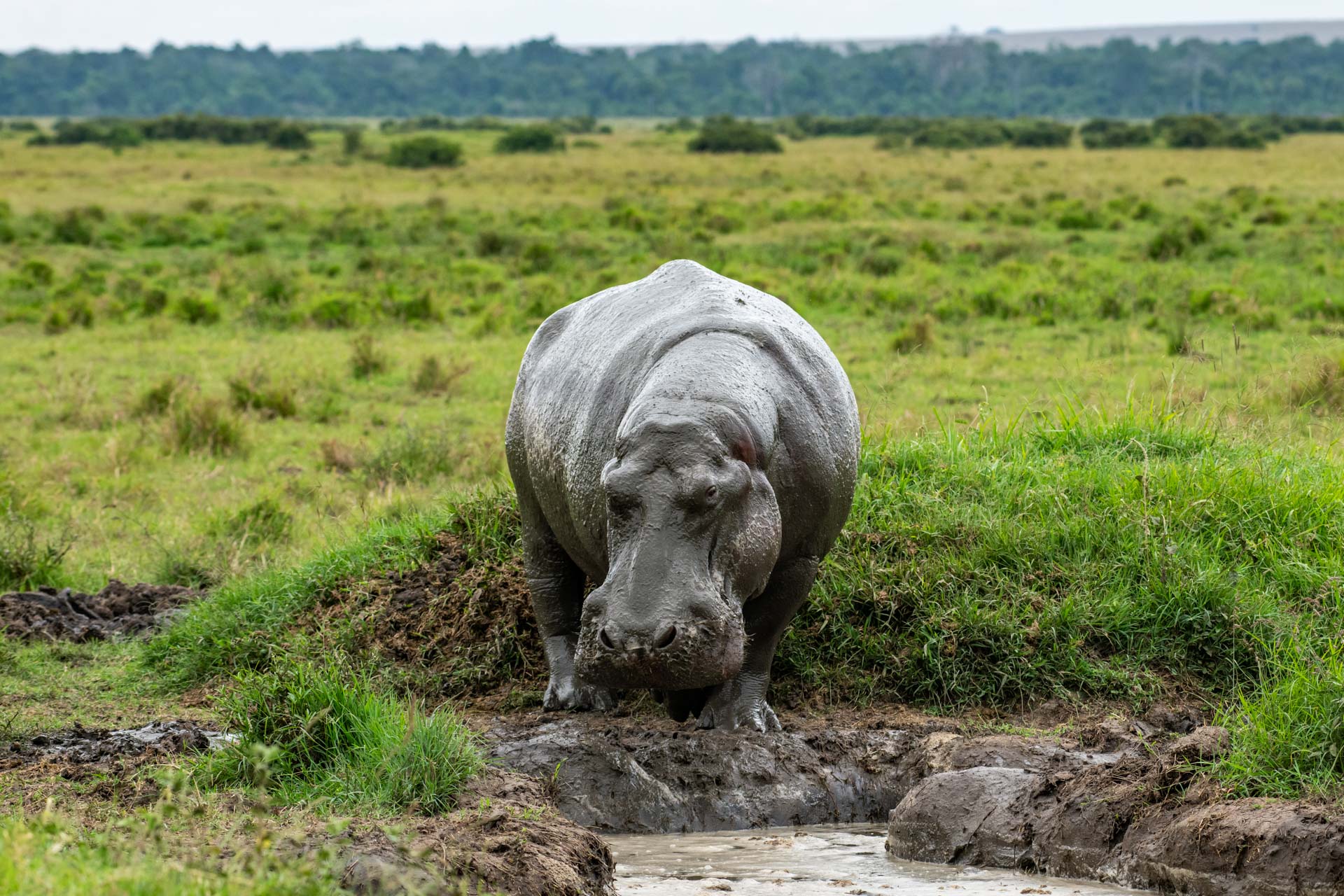
As Angama Amboseli Guide Salash and a guest ventured out one cloudy morning, they were fortunate to see a rare nocturnal species, a marsh owl, perched elegantly in the tall grass. These owls are almost entirely nocturnal but may briefly emerge from their secluded hideaways on rare, overcast mornings or dusky evenings. With the sky darkening and a heavy rainstorm looming on the horizon, this owl seemed to be making its final rounds before retreating into its daytime shelter.
The Photographic Studio allows guests to learn different techniques and work with different cameras while out on safari. This week, I joined Guide Dan and a guest for a short safari in the Sanctuary to practise some techniques we’d covered in the Studio. Not long into the drive, we came across fresh lion tracks — possible signs of the male lions spotted earlier that morning in the area.
The tall grass made spotting any lions quite challenging, even with tracks to follow, but luck was on our side. Eventually, we came upon two lionesses resting in the shade, their golden coats blending into the dry grass. As we approached, they began to stir.
One of the lionesses, likely the older of the two, seemed comfortable with our presence, perhaps recognising us from previous encounters. Her sister, however, darted cautiously into the tall grass, keeping her sharp gaze fixed on us from a distance. Despite her initial wariness, she stayed close, watching as we quietly settled in to observe. We spent the rest of the evening with them, watching as the sun began to set and cast warm light over the Sanctuary. As dusk fell, even the cautious sister seemed to relax, her stance softening as if trusting her sibling's calmness.
On a full-day safari in Amboseli National Park, we hoped to glimpse the elephant herds as they moved from the open plains and acacia canopy toward the swamps. But the main road to the main spring was quiet, with no signs of elephants on the horizon, until one guest excitedly spotted movement up ahead on our left. Our anticipation grew as we saw a family of elephants charging toward the road, lining up in a single file, following their well-worn paths to cross. But little did we know, a surprise awaited.
Just as we stopped to watch them pass, the elephants suddenly veered off course, ploughing into the tall grass and forming a protective circle around their calves. At that moment, the air was filled with the intense sounds of an ongoing battle nearby. A group of hyenas was trying to snatch food from a pride of lions resting in the shade, and the felines leapt up to defend their kill. The elephants stood their ground, unflinching, as hyenas darted past them, some carrying scraps of meat from the skirmish.
One of the younger females in the herd seemed particularly agitated by the proximity of the hyenas. She bolted toward them with a sudden, thunderous charge, scattering the scavengers in every direction. Everyone in the vehicles watched in awe as this intense drama unfolded in just minutes. Eventually, each group went their own way — the elephants continued their journey to the swamp, the hyenas retreated with a few prized pieces of meat, and the lionesses returned to the shade.
Back at the Sanctuary surrounding Amboseli, there is a remarkable diversity of birds, but none captivates me quite like the African hoopoe. One afternoon, we found a pair of African hoopoes perched on a branch, their chestnut feathers and black-and-white wing patterns standing out against the foliage.
I quickly trained my lens on them, preparing for the moment they'd take off, something I have tried to capture many times. They launched into the air as if on cue, each darting off in opposite directions with their unique, bullet-like flight. The experience was exhilarating — the rapid movements, the flash of wings, and the thrill of finally capturing their beauty in motion made all the previous attempts worthwhile.
As the sun descended behind the canopy of acacia trees, casting a warm glow across the landscape, we watched a pair of crowned cranes gracefully take off, catching the last rays of sunlight. In the distance, a single file of wildebeests steadily made its way toward the open fields, their silhouettes highlighted against the fading light.
As we took in this breathtaking moment, it felt like the perfect way to end the day and week. Nature’s rhythm continues, and we’re grateful to witness these timeless patterns unfold each evening, where survival, unity, and grace merge seamlessly under the African sky. —Japheth Supeyo
Filed under: This Week at Angama
Subscribe for Weekly Stories
Comments (1):
1 December 2024
Thank you for 353 episodes of TWAA, your commitment to sharing with us the beauty of all life in the Mara.
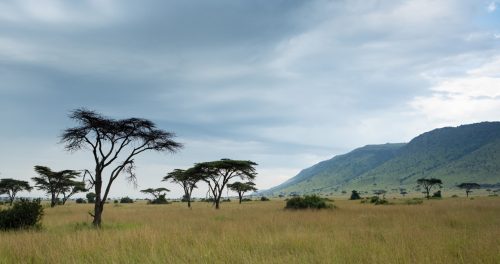
Angama Safari Camp